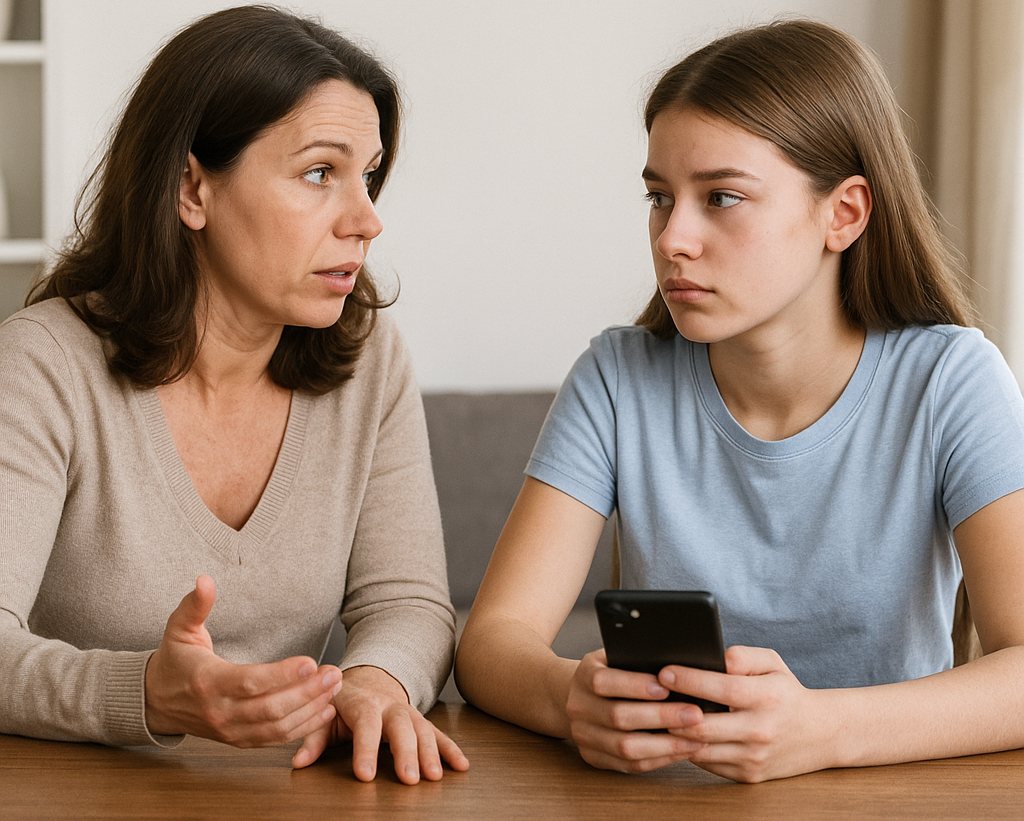By Jill MacDonald
Between schoolwork, social media, gaming, and streaming, teens spend a significant part of their day in front of screens. As a parent, finding the right balance between giving them freedom and guiding them toward healthy screen habits can feel like a constant struggle.
In this post, we’ll break down what the experts say, what’s really happening, and how to manage screen time in a way that’s both realistic and teen-friendly.
How Much Screen Time Is OK for Teens?
There’s no one-size-fits-all number, but here’s what the experts suggest:
- The American Academy of Pediatrics (AAP) recommends focusing on:
- Prioritizing sleep, physical activity, and face-to-face interaction
- Creating a Family Media Plan with personalized guidelines
👉 Download our free Family Screen Time Contract below
- CDC data shows that many teens average 7+ hours of recreational screen time each day—not including school-related use.
💡 Ask yourself:
Is screen time interfering with your teen’s sleep, health, schoolwork, or relationships?
Signs of Unhealthy Screen Use
Keep an eye out for these red flags:
- Poor sleep or staying up late on devices
- Declining grades or disinterest in school
- Avoiding hobbies, sports, or family time
- Mood swings, anxiety, or increased irritability
- Withdrawal from real-life friendships or activities
If you’re noticing a few of these signs, it may be time to reassess your teen’s screen habits.
How to Set Healthy Screen Time Limits (Without Starting a War)
Teenagers crave independence, so top-down rules often backfire. Instead, try a collaborative approach:
1. Involve Them in the Process
Ask questions like:
- “What do you think is a fair daily limit?”
- “What helps you relax—and what becomes a distraction?”
2. Focus on Balance, Not Just Hours
Encourage routines like:
- 8–10 hours of sleep
- At least 1 hour of physical activity
- Screen-free mealtimes
- Wind-down time without screens before bed
3. Set Device-Free Zones
Agree on screen-free times or places, such as:
- During meals
- Bedrooms at night
- During homework (unless needed)
4. Use Built-In Screen Time Tools
These apps can help:
- Apple Screen Time
- Google Family Link
- BARK or other parental control tools
5. Talk About Content, Not Just Time
Not all screen time is created equal. Help teens reflect on:
- Creative apps like music, art, or video editing
- Staying connected with real-life friends
- Avoiding toxic or addictive online content
Real Talk: Conversation Starters
Try these gentle, non-judgmental prompts:
- “Which app do you think eats up most of your time?”
- “How do you feel after scrolling for a while?”
- “Do you ever feel like screens get in the way of things you want to do?”
💬 Stay curious—not critical. Teens are more likely to engage when they feel heard.
Bottom Line: Tech-Savvy, Not Tech-Obsessed
Your teen doesn’t need to be screen-free—they need balance. With your support, they can build screen time habits that:
- Prioritize well-being
- Support school, friendships, and hobbies
- Foster digital mindfulness—awareness of how tech impacts mood and choices
This isn’t about control. It’s about coaching your teen to use technology in a way that supports a full, healthy life.
🌿 Free Resource: Family Screen Time Contract
Ready to start the conversation?
👉 Download our free Family Screen Time Contract PDF
This customizable agreement helps create structure and balance—together.


